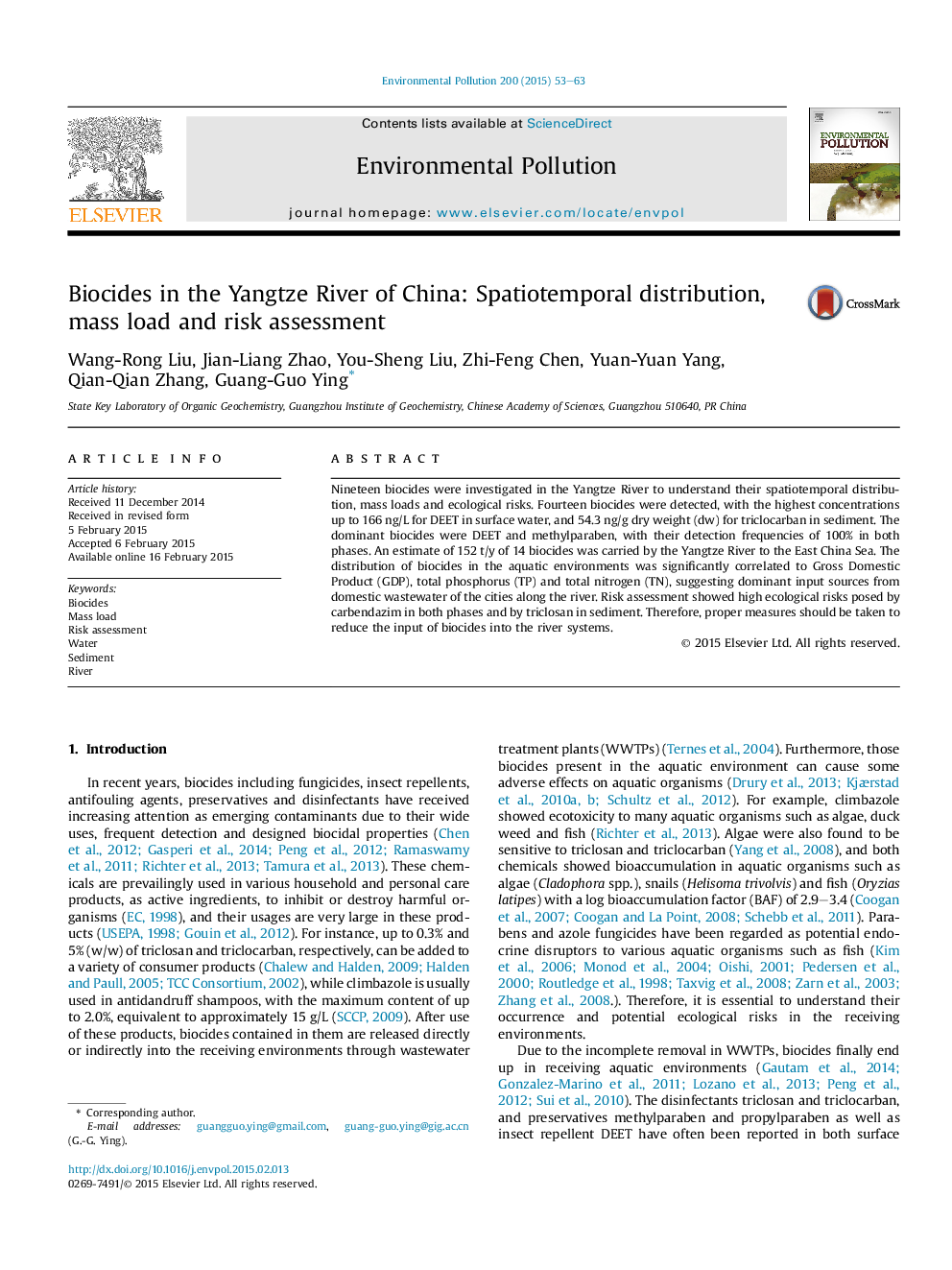| Article ID | Journal | Published Year | Pages | File Type |
|---|---|---|---|---|
| 4424290 | Environmental Pollution | 2015 | 11 Pages |
•Biocides were ubiquitous in the surface water and sediment of the Yangtze River.•The dominant biocides in the Yangtze River were DEET and methylparaben.•Annual flux of biocides was 152 tons from the Yangtze River to the East China Sea.•Domestic wastewater was the main source of the biocides.•Carbendazim and triclosan posed high ecological risks.
Nineteen biocides were investigated in the Yangtze River to understand their spatiotemporal distribution, mass loads and ecological risks. Fourteen biocides were detected, with the highest concentrations up to 166 ng/L for DEET in surface water, and 54.3 ng/g dry weight (dw) for triclocarban in sediment. The dominant biocides were DEET and methylparaben, with their detection frequencies of 100% in both phases. An estimate of 152 t/y of 14 biocides was carried by the Yangtze River to the East China Sea. The distribution of biocides in the aquatic environments was significantly correlated to Gross Domestic Product (GDP), total phosphorus (TP) and total nitrogen (TN), suggesting dominant input sources from domestic wastewater of the cities along the river. Risk assessment showed high ecological risks posed by carbendazim in both phases and by triclosan in sediment. Therefore, proper measures should be taken to reduce the input of biocides into the river systems.
Graphical abstractFigure optionsDownload full-size imageDownload as PowerPoint slide
